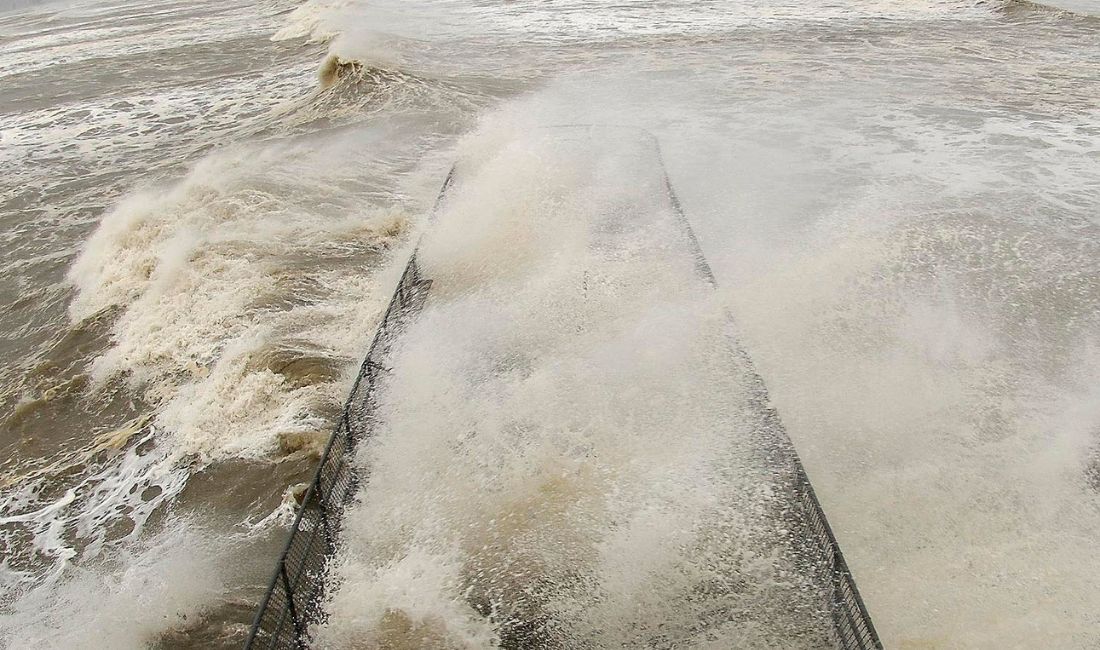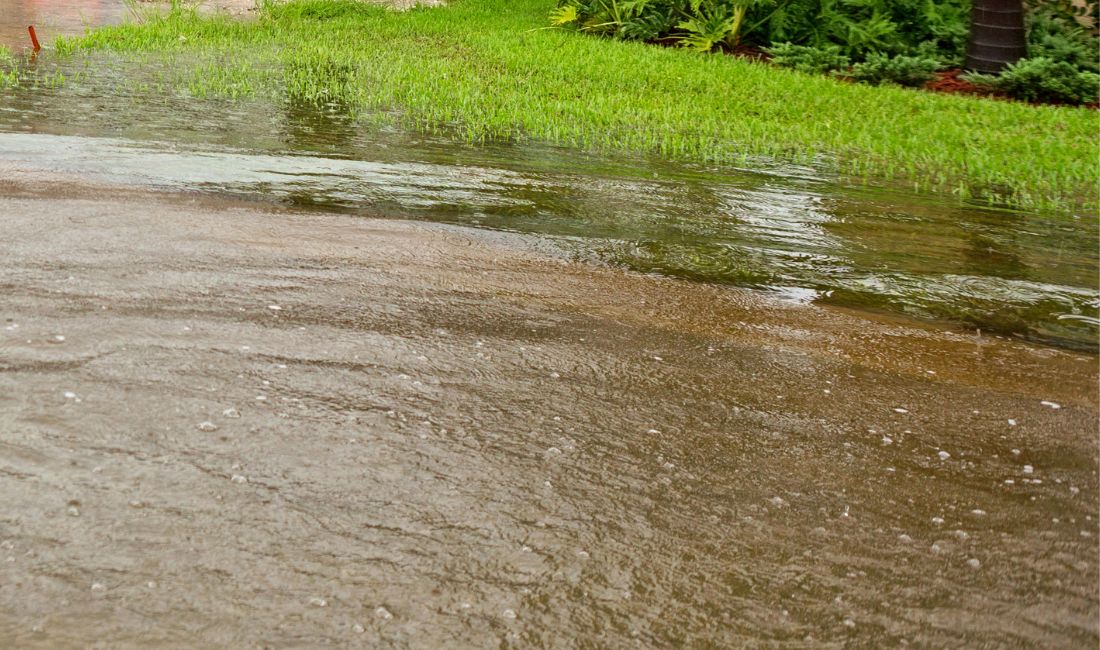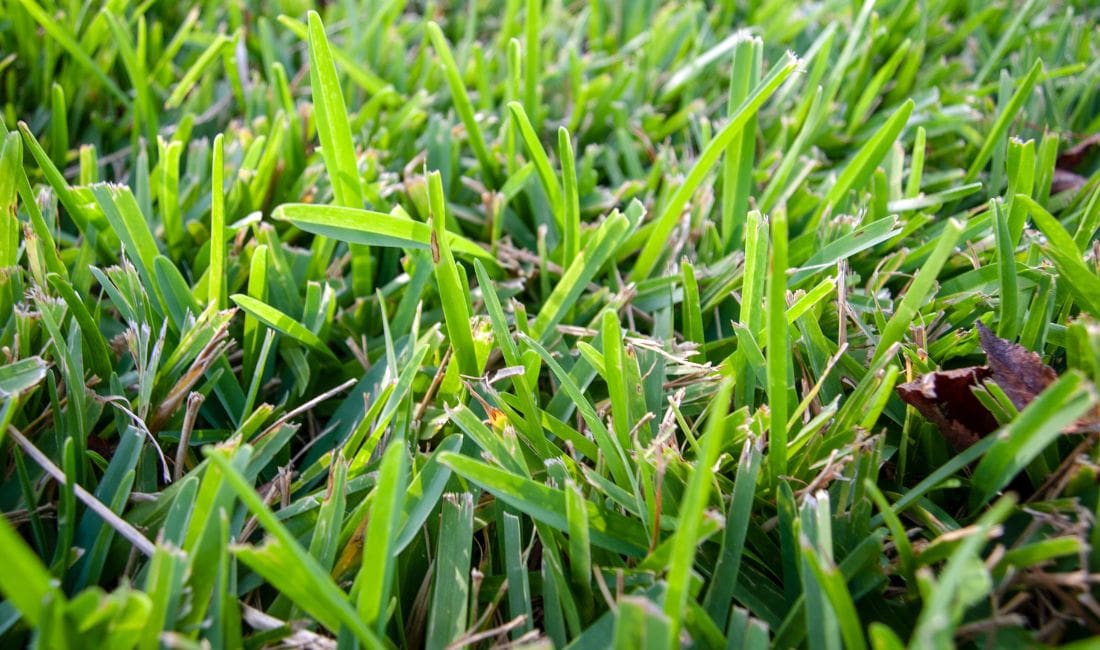One of the best parts about properties in Palm Beach is their proximity to the ocean. It can also be one of the reasons your lawn can struggle. Salt damage, both from flood waters and from sea spray, can cause damage to a variety of plant life, including your turfgrass.
In this article, we will go over the signs of salt damage, how to help your lawn recover, some salt-tolerant grasses that you may want to plant, and more.

Why is Salt Damaging to Lawns?
As the water from sea spray or floodwater evaporates, salt is left behind, along with other minerals such as magnesium, calcium, and potassium.
Salt can have a “burning” effect on grass leaves, so the blades of grass will turn brown and die. As the salt works its way into the soil, it begins to move through the grass’s root system.
Salt can impact lawns the same way that a drought can, in that it inhibits grassroots from taking up moisture. So even if your lawn is well-watered, it can turn orange or brown and dry out.
Lawns in northern climates suffer salt damage from ice melt products that are sprayed onto trees, plants, and lawns through road spray. They also suffer damage when road salt or ice melt products leach into the soil as snow melts.
While the damage to Palm Beach properties is from saltwater and salt spray, and the damage in northern climates is from ice melt products, the results are the same: brown, dead lawns.
Note: It can be hard to distinguish the difference between underwatering, overwatering, lawn pests, lawn diseases, and salt damage. The professionals at Coastal Gardens are experts at diagnosing lawn issues and treating them.

Salt Damage from Sea Spray
Sea spray most often affects plants, trees, and grasses near the ocean, but after storms such as hurricanes, tropical storms, or even a strong wind, plants further inland can show signs of salt spray damage.
The combination of wind and waves brings humid air filled with seawater droplets inland, and when the wind hits resistance, the droplets fall to the ground, often landing on plant life. Though a natural occurrence, the salt can have a damaging effect on your lawn.
This type of damage can become noticeable one to two weeks after a storm. Salt spray damage typically affects not only grass but shrubs and trees as well, which can be recognized when only one side of the shrub or tree is damaged.
How to Repair Lawn Spray Damage
If you’re noticing that your lawn is turning brown but you know it is receiving adequate irrigation, salt spray damage may be to blame.
The first step is to water your entire lawn. Use a garden hose and a spray nozzle setting that most resembles the rain.
Carefully move across your entire lawn and spray the blades of grass with the water. Your intention is to wash off the salt residue.
You also want to water enough so that the salt is flushed from the soil. You want to “flood” your yard with enough water that the salt is washed away.
Follow this up with several more waterings over the next few days and weeks to ensure that the salt is gone and water is reaching your lawn’s roots again.
Consider getting a consultation and a soil analysis from a professional such as Coastal Gardens to check if your lawn would benefit from further treatments, compost, or fertilization.

Salt Damage from Flooding
Floods can be much more catastrophic to properties than sea spray damage, so helping your lawn recover after a flood may not be the top priority, especially if other parts of your landscape or property were damaged.
However, the quicker you can reverse the damage done to your lawn from saltwater flooding, the better. Salt dries up plant life quickly, and your lawn can suffer.
How to Repair Damage from Saltwater Flooding to Lawns
Remove all debris from your yard that the floodwaters might have brought in, and ensure there are no broken branches, leaves, silt, or other items caught in your lawn. Use a rake to ensure all of the smaller pieces are removed.
Soil compaction is common after a flood, so restrict walking on the turfgrass as much as possible.
Aerate the lawn after the debris is removed. This will bring sunlight, oxygen, and irrigation into your turfgrass and will help with some of the compaction.
Leach salt out of the grass and soil with lots of water. This will involve watering the entire area with a garden hose. You may have to repeat this step of the process several times to remove all the salt from the soil.
Call for a consultation and a soil analysis from a professional such as Coastal Gardens to check if your lawn would benefit from treatments, compost, or fertilization to help it further recover.

Salt-Tolerant Lawn Grasses
While all plant life can be harmed by the negative impacts of salt to some extent, there are varieties of grasses that have shown to be less impacted by salt. We cover two of the most common types of lawn grass found in the Palm Beach area: St. Augustinegrass and zoyzia grass.
St. Augustinegrass (Stenotaphrum secundatum)
Many South Florida lawns are made up of St. Augustinegrass, a bluish green grass with large, flat stems. It grows in spring, summer, and fall but may become brown and dormant in the winter.
Although it will do well in the shade, it requires 4 to 6 hours of sun to really thrive. St. Augustinegrass can be picky about what length it is – too high and you might have to deal with thatch or diseases, while mowing too close to the ground will cause stress to the grass and it may thin out in response.
It benefits from regular fertilization and watering and is prone to weeds and can become infested with chinch bugs.
Zoysia Grass (Zoysia spp.)
Zoysia grass is often used in areas with high foot traffic. It works well in warm weather climates, so is common here in Palm Beach, but it can take longer than other types of grass to become established.
Unlike the thick blades of St. Augustinegrass, zoysia grass is narrow and pointed and is a light green to emerald green color.
It does best in full sun, as too much shade can cause it to thin out, allowing weeds to grow. It also benefits from regular core aeration to prevent thatch buildup and regular mowing by taking off no more than a third of its height.
Let a Professional Handle Your Lawn’s Salt Damage
The Coastal Gardens team are experts at recognizing, preventing, and treating lawn issues for Palm Beach properties including lawn salt damage. We can handle the entire process of helping your lawn recover from salt damage, either from sea spray or flooding.
Learn more about our Turf Management Services
Contact us today to learn how we can manage not only your lawn but your trees, plants, and Palm Beach landscape as a whole.
CALL US TODAY At 561-308-7604
Estate landscape Services
For Fine Properties in Palm Beach
With Coastal Gardens, you can rest easy knowing that your property is taken care of by a dedicated team of estate landscape professionals who truly care about creating and maintaining a dazzling outdoor space you can be proud of.
